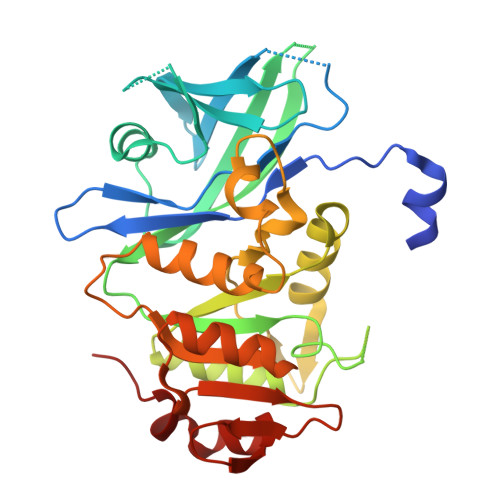Structures of a lipin/Pah phosphatidic acid phosphatase in distinct catalytic states reveal a signature motif for substrate recognition.
Vitkovska, T., Welcome, F.S., Khayyo, V.I., Gao, S., Wymore, T., Airola, M.V.(2025) J Biological Chem : 110830-110830
- PubMed: 41109341
- DOI: https://doi.org/10.1016/j.jbc.2025.110830
- Primary Citation of Related Structures:
7LHK, 9D13, 9D14, 9D15, 9D16 - PubMed Abstract:
Lipin/Pah phosphatidic acid phosphatases (PAPs) are Mg 2+ -dependent enzymes that catalyze the dephosphorylation of phosphatidic acid (PA) to produce diacylglycerol. Deficiency of lipin PAP activity in humans results in inflammatory disorders such as rhabdomyolysis and Majeed syndrome. Previously, we reported the first PAP enzyme structures of Tetrahymena thermophila (Tt) Pah2 at 3.0Å resolution. Here, we present five new higher resolution (1.95-2.40Å) structures of Tt Pah2 that represent active states of catalysis, including the product analog tungstate bound to the active site, and an inactive state with a distorted active site. The structures, in conjunction with flexible docking simulations and biochemical analysis, connect two highly conserved aspartate and arginine residues in magnesium coordination and recognition of the substrate PA. Overall, this provides a structural basis for catalysis and defines a signature Asp-Arg motif in lipin/Pah PAPs that enables recognition of their lipid substrate PA, providing insight into how the HAD domain of lipin/Pah PAPs evolved to act on a membrane embedded substrate.
- Department of Biochemistry and Cell Biology, Stony Brook University, Stony Brook NY 11794, USA.
Organizational Affiliation:


















